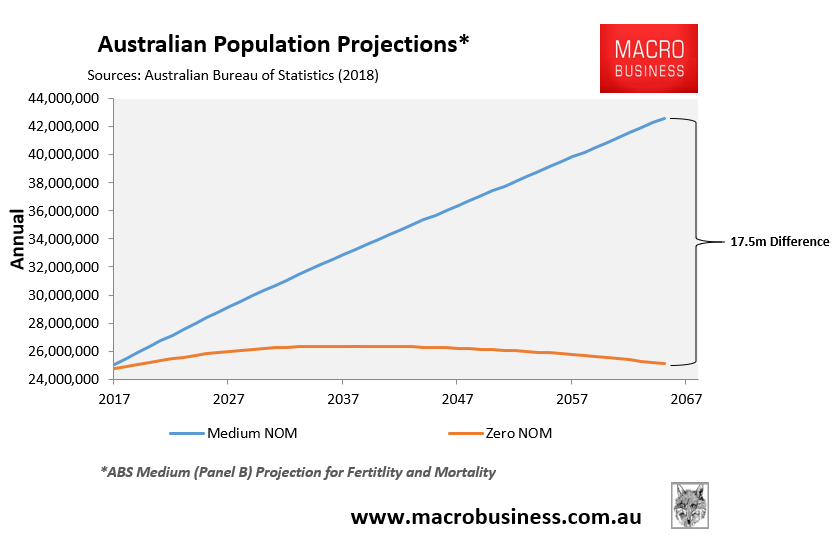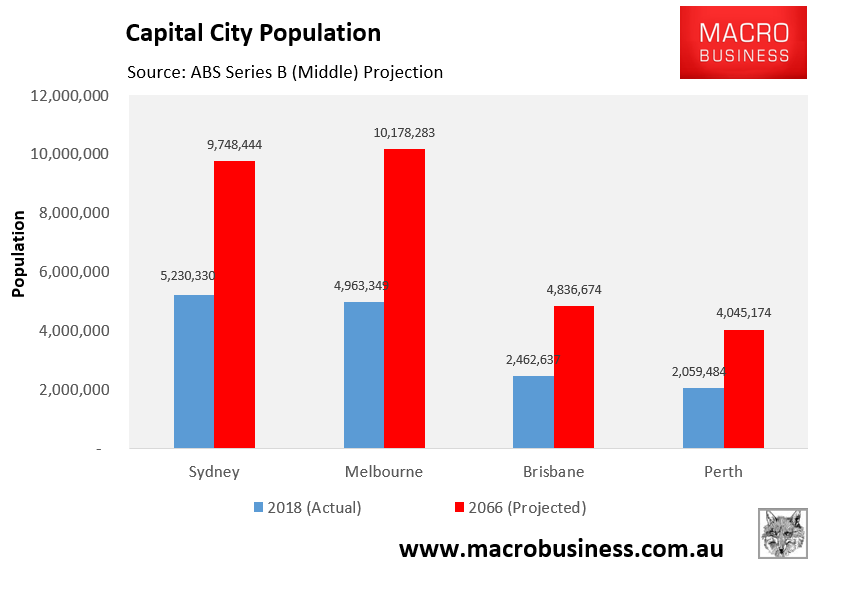The Australian’s Katrina Grace Kelly is the latest commentator to lament the demise of the traditional Aussie backyard as the nation pivots to apartments and lot sizes have shrunk. She cites author Tony Hall, who contends that this change is having a negative impact on health and wellbeing, and has called for Australia to go “backyard to the future” by populating the interior of the nation and turning our deserts into urban oasis:
Let’s not accept as inevitable the death of the Aussie backyard. Here we sit, in the sixth largest country by landmass… Our country, the world’s largest island… Yet our population is tiny…
30 years ago the average house block was just more than 1000sq m and now it is less than half that. The average new housing block in our two biggest cities measures only 450sq m and the smallest is a teensy 80sqm.
This is not a matter of preference, it is a situation foisted upon us, brought about by inadequate roads and transport systems, poor planning and incompetent governments serving vested interests…
Hall says: “Whatever the size of the lot, the dwelling now covers most of its developable area.” This is a “physical expression of the way that Australian lifestyles are changing for the worse”… He says the loss of our back gardens is having an adverse effect on “health and wellbeing, especially for children”…
It wasn’t that long ago that the urban sprawl was lamented. Thanks to containment efforts, we now find ourselves crammed into unsuitable spaces. If we look to the US for inspiration, we can keep the population growing but manage the urban sprawl better, with a view to decentralisation…
If the Israelis can turn a desert into a green belt, then surely, we should be able…
Kelly is not wrong about high density living being harmful to our health and wellbeing. Multiple studies have come to similar conclusions (for example see here, here, here, and here).
But how is filling Australia’s bone dry interior a workable solution when water is incredibly scarce and desalination is not an option? Where is the industry and jobs to support these populations? And who will pay the exorbitant costs to build these urban oasis in the desert?
Let’s cut the bull. The primary reason why lot sizes are shrinking and people are being shoehorned into apartments is because of excessive population growth from mass immigration.
Australia’s population has grown by 8.4 million people (~50%) over the past 30 years, the overwhelming majority of which has gone into the major capital cities. This extreme population growth is projected to continue indefinitely, with Australia projected to add another 17.5 million people by 2066, all via net overseas migration (NOM):

Australia’s major cities are also projected to roughly double in size by 2066:

And this will necessarily mean that backyards will vanish at an alarming rate.
For example, the Urban Taskforce projects that only one quarter of dwellings across Sydney will be detached houses by 2057, down from 55% in 2016:

If Katrina Grace Kelly is genuinely concerned about the vanishing of Australia’s backyards, she should lobby to slash immigration, since it is the primary cause.
Otherwise Sydney (and other major cities) are facing a future where only the wealthiest residents will be able to afford a detached house with a backyard, whereas the working classes will be forced to live like sardines renting high-rise apartments.
Is this the future that we want to bestow on future generations?
Cut immigration.

